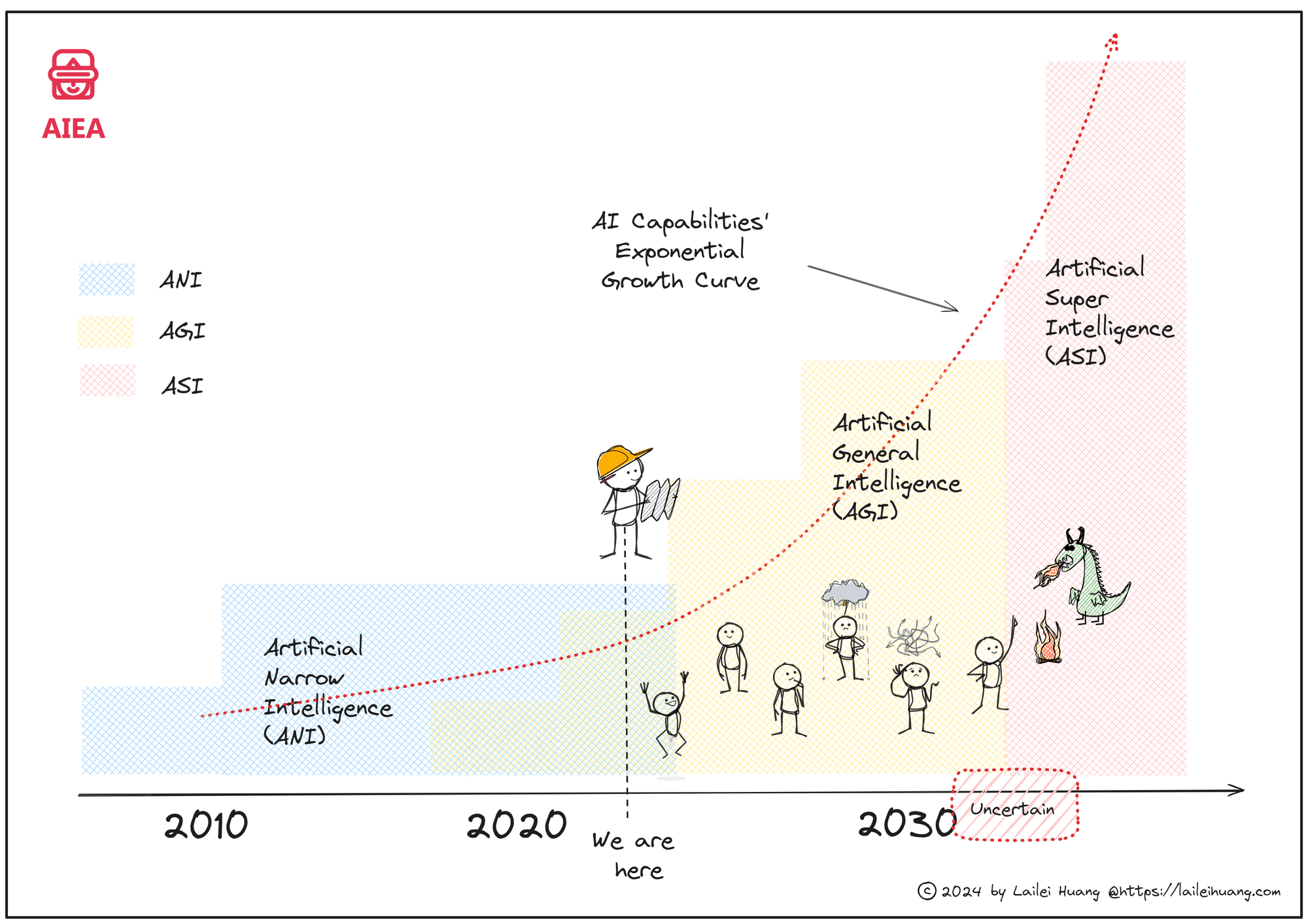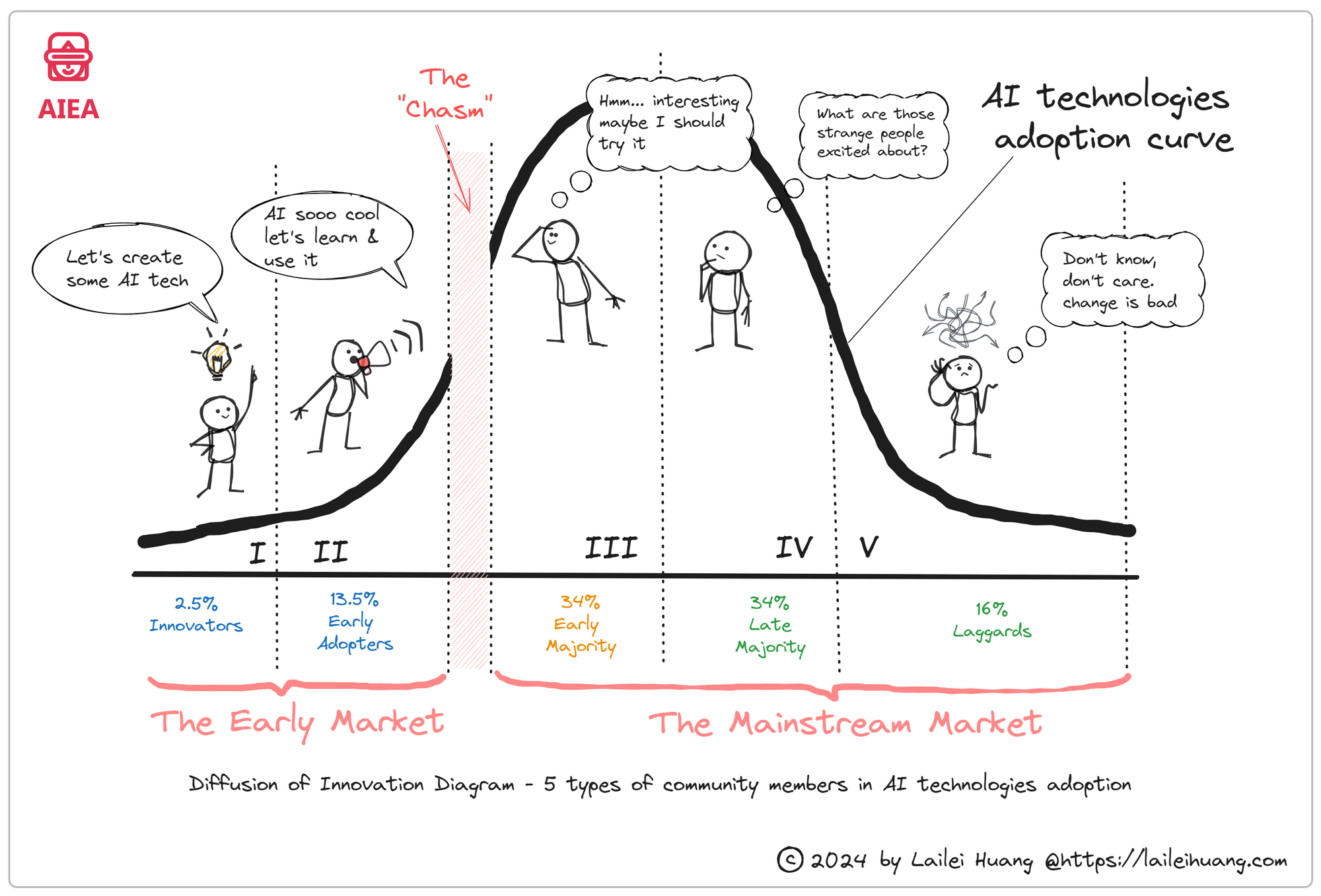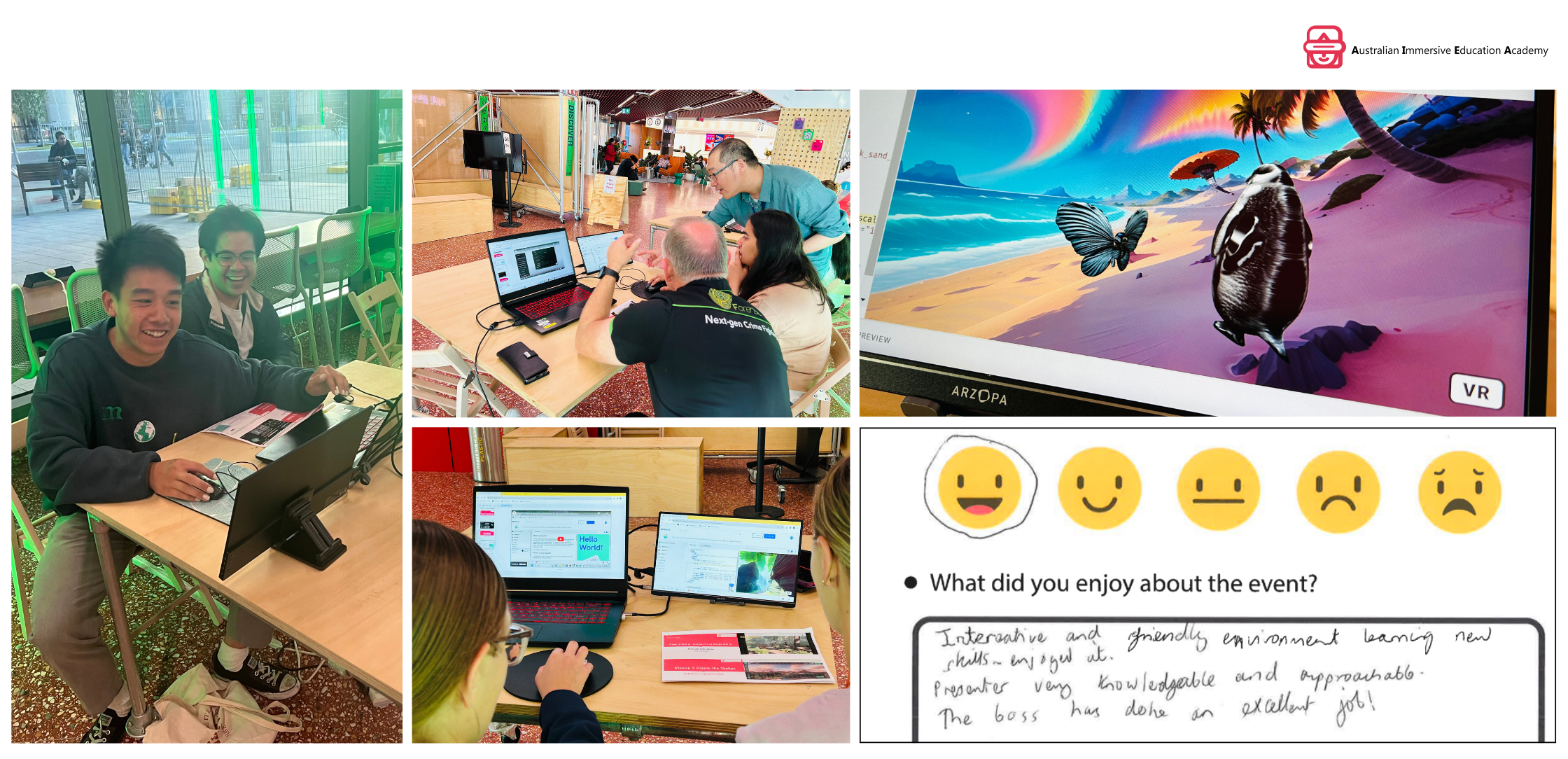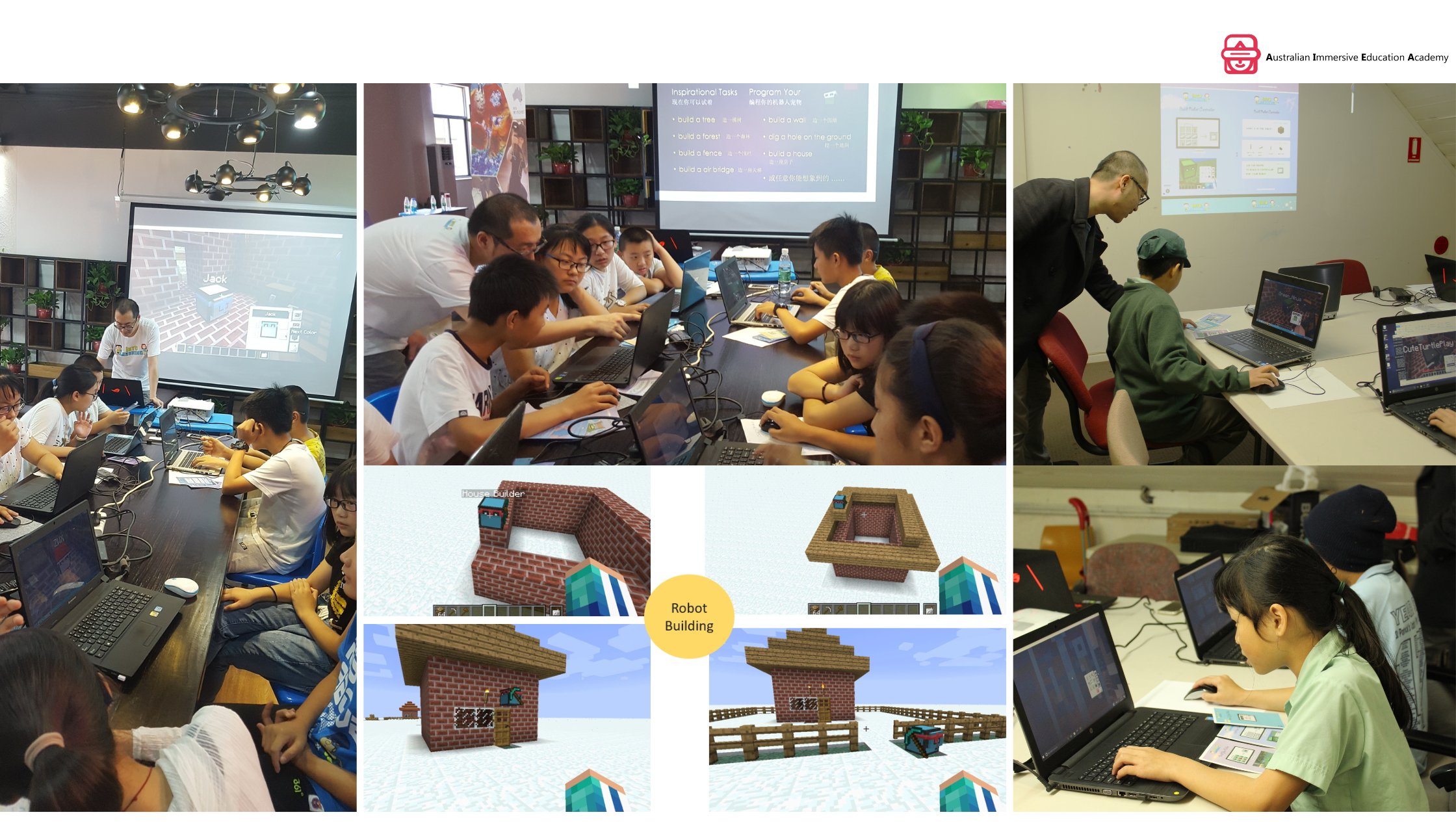3 Types of Programs for Making AI Inclusive - Preparing Local Communities for AGI

Summary
In the face of the rapid transition from Artificial Narrow Intelligence (ANI) to Artificial General Intelligence (AGI) and the exponential growth of related technologies, there is an increasing gap in AI inclusivity and community readiness for AGI (e.g., understanding and adaptation to AI-powered automation, deepfakes). To bridge this gap, I discuss, in this article, three types of community engagement and education programs. The first focuses on raising awareness about AI technologies and their impacts, particularly targeting families, youth and children. The second type aims to go beyond awareness and provide communities with deepen understanding via immersive, hands-on learning projects that cover foundational AI concepts and workflows. The third type facilitates and encourages individuals to leverage their AI knowledge to effect positive change within their families and communities. Concrete examples from my previous initiatives will be discussed to illustrate the three types of programs. Addressing this gap is urgent, as it has far-reaching implications for individuals, families, and communities in the upcoming decade when AGI is highly likely to be achieved by consensus.

Section 1: Where Are We Now?
1.1 Transition from ANI to AGI
Society is witnessing a profound shift from Artificial Narrow Intelligence (ANI) to Artificial General Intelligence (AGI). ANI refers to AI systems designed to perform specific tasks, such as image recognition or language translation, excelling in their narrow domains but lacking the ability to generalize knowledge across different areas. In contrast, AGI aims to create machines with human-like intelligence, capable of processing multi-modal data (e.g., text, audio, visual), learning, reasoning, and adapting to various tasks and environments, much like the human brain can achieve.

1.2 An Exponential Growth
The transition from ANI to AGI is occurring at a remarkable pace, propelled by the exponential growth in computing power and the rapid advancement of AI algorithms. Moore's Law, which states that the number of transistors on a microchip doubles approximately every two years, has been a key driver of this progress. As computing power increases, AI systems can process larger datasets, learn more complex patterns, and make more accurate predictions. OpenAI's scaling laws further demonstrate that AI model performance improves predictably as the amount of computational resources and training data increases, leading to a quantum leap in AI capabilities.

1.3 The Impact
The general nature of AGI and the fast-paced transition will have a profound impact on people's jobs and lives. On the positive side, AGI has the potential to revolutionize various aspects of human endeavor, from healthcare and education to transportation and entertainment. It could lead to unprecedented innovations, improved efficiency, and enhanced quality of life.
However, the widespread adoption of AGI also poses significant challenges. It may result in job displacement as machines become capable of performing tasks previously reserved for humans, exacerbating existing social and economic inequalities. Moreover, the development of AGI raises complex ethical and philosophical questions about the nature of intelligence, consciousness, and the relationship between humans and machines.
1.4 The Gap Issue
Despite the rapid advancements in AI technology, there exists a significant gap between the pace of AI development and communities' awareness and understanding of its impact. Many individuals and communities are not adequately informed about the potential benefits and risks associated with AGI, leading to a lack of preparedness for the impending changes.
This knowledge gap can hinder people's ability to adapt to the transforming landscape and make informed decisions about how to navigate the AGI-driven future. Therefore, addressing and reducing this gap is crucial to ensure that the benefits of AGI are distributed equitably, and its risks are mitigated effectively.

According to the Diffusion of Innovation theory, people in the community can be categorized into five groups based on their attitudes toward adopting new AI technologies. While innovators (approximately 2.5% of the population) and early adopters (around 13.5%) actively seek information and take the initiative to improve their AI knowledge and skills, the remaining three groups—early majority, late majority, and laggards—are increasingly likely to take a wait-and-see approach. This hesitancy to engage with AI puts them at a higher risk of being negatively impacted by the rapid advancements in AI technology.

Moreover, the existence of 'the chasm' in the technology adoption lifecycle, as illustrated in the figure above, highlights the significant gap that will likely emerge between early AI adopters and the mainstream market. As AI advances along an exponential curve, the disparity in knowledge, capabilities, and opportunities between those on either side of the chasm will become increasingly pronounced. This widening gap underscores the importance of developing targeted and inclusive community programs to help individuals and organizations navigate the chasm and ensure that the benefits of AI are more evenly distributed.
1.5 A Step to Bridging the Gap
This article contributes to bridging the gap by presenting three types of AI-inclusive community programs designed to raise awareness, foster understanding, and empower individuals and communities to thrive in the era of AGI. By providing accessible and engaging learning opportunities, these programs aim to demystify AI technologies, explore their practical applications, and equip participants with the knowledge and skills necessary to navigate the AGI revolution.

Section 2: Bridging the Gap
In this section I'll discuss three particular types of programs that can be designed and delivered to bridging the gap of AI accessibility (see the Figure above). To effectively illustrate this approach, examples from my past initiatives at Australian Immersive Education Academy (AIEA) and The Learning Space from City of Canada Bay are used.
2.1 Programs for Raising Awareness
Program Objectives:
To increase access to the latest AI technologies, one of the most effective approaches is showcasing the benefits, risks and relevant possibilities in places where communities gather e.g., community hubs like public libraries and community centers. Two types of such AI accessibility programs from my past initiatives at AIEA and City of Canada Bay are discussed below.
- Major or special events whose audience is families and communities of all types
- School holiday and youth week programs for children and youth
Here I'd like to put emphasis on hands-on, experiential learning activities (i.e., what AIEA promotes). Compared with more passive types of programs (e.g., author talks, watching a documentary video exhibition), I believe interactive, hands-on activities add understanding and can demonstrate practical values for the audience.
(1) Major or Special Events on Science, Technology and Art
Example 01: AI Inclusion and Accessibility Program on Generative AI, as part of CoLab Technology Lab @Phive, City of Parramatta (November 2023 - February 2024)

Some example videos generated by the local community during the CoLab AI program.
Example 02: AI Inclusion and Accessibility Program on Generative AI, as part of CoLab Technology Lab @Phive, City of Parramatta (November 2023 - February 2024)

Two participants created a game-like 3D virtual world and enjoyed it a lot.
Example 03: AI Community Outreach Program on Humanoid Robots, as part of Rhodes Science Fair 2023 @The Connection, Rhodes, City of Canada Bay, July 2023

Example 04: AI Community Outreach Program on AI Art creation, as part of Rhodes Science Fair 2022 @The Connection, Rhodes, City of Canada Bay, July 2022

(2) School Holiday Programs for Children and Youth
Besides events that target general public, school holiday and youth week programs are excellent opportunities to provide AI literacy and accessibility programs. By providing AI literacy programs, we can help children and youth understand the fundamental concepts, applications, and implications of AI. These opportunities will enable them to make informed decisions and actively participate in shaping the future.
Example 05: Youth AI Camp, @Green Square Library, Sydney, October 2019, January 2020


This AI Youth Camp program not only aims to raise awareness but more importantly support participants to build a deep understanding of the subject matter. This type of program will be the focus in the section below.
2.2 Programs for Boosting Deep Understanding
Program Objectives:
Example 06: Self-driving Car Training as part of Youth AI Camp, @Green Square Library, Sydney, October 2019, January 2020

In the hands-on project, participants were able to learn the core concepts (e.g., sensors, data, ANN, training, inference). More importantly the concepts are introduced in a game-like, practical context. As a result, students gained an in-depth understanding of the core concepts and workflows in Machine Learning.

Example 07: Create Your Own Intelligent Minecraft Assistant, @STEM Conference 2017, Sydney and Suzhou China, July 2017
Large Language Models (LLMs) like ChatGPT are powerful tools that can assist us in processing text (e.g., drafting emails) and generating images (e.g., designing logos). However, their impact is limited to the digital realm. By integrating AI with robotics, we can extend its capabilities to the physical world, enabling AI agents to perform tasks such as cooking meals or feeding pets. This is why 'Humanoid Robots' have become a hot topic among both startups (e.g., OpenAI supported Figure One robot) and large corporations (e.g., Tesla's Optimus), as they aim to leverage the potential of AI to assist humans in their daily lives.
I have been fascinated by the embodied intelligence aspect of AI and robotics since 2017. To introduce these concepts, I designed and delivered an AI Youth Camp targeting children and youth aged 10 and above in July 2017. In the workshop, we used the popular game Minecraft to introduce the concept of intelligent assistants. Students were guided step-by-step through the process of designing and coding their own intelligent assistants to carry out in-game tasks, ranging from simple actions like digging a hole or cutting a tree to more complex ones, such as building a house e.g., demonstrated in the video below.

Two example Minecraft intelligent assistants that I created and used for the AI Youth Camp
Even though this program was designed in 2017, it remains highly relevant today, perhaps even more so. This is because the fundamental concepts of AI, such as intelligent agents, task automation, and human-AI collaboration, continue to be at the core of AI applications and will play an increasing role in the AGI revolution.
2.3 Programs for Facilitating Positive Change
Program Objectives:
This type of program goes one step further compared with the previous two types, as it equips the participant with the knowledge and skills to innovate using AI. The end goal is not only to gain a deep understanding of how AI works but also to enable participants to create, with the knowledge and skills, new experiences, add value to existing services, professional or personal workflows, enhance the wellbeing of people and family lives.
I haven't encountered programs specifically designed to equip participants with AI knowledge and skills for innovation in my past or current professional experience. The closest examples I can think of are the 'Open Maker' program and 'Emerging Tech' program at the Maker Space in The Learning Space, City of Canada Bay. These programs provide community spaces and resources for participants to connect, learn and create with technologies.
I have facilitated both of these programs; however, they strongly emphasize 3D printing, die-cutting, and electronics-related technologies (e.g., soldering) rather than focusing on AI literacy or AI-powered innovation. I'd like to use two projects of mine to illustrate what the end results may look like out of this type of programs.
Example 08: Create New Experiences with AI - Monster Hunt Game, @Twilight Fun For Families, City of Canada Bay Libraries, October 2023, April 2024
This is a smartphone game with AI capabilities that I created for City of Canada Bay Libraries' Twilight Fun for Families events. It is an augmented reality treasure hunting game that makes use the smart phone's camera and AI object recognition to identify and record the 'monster treasures' hidden around the library buildings.
The magical AI capabilities together with the game elements (e.g., cheerful animation, sound feedback) made the experience super fun and engaging for the participants of these events. Moreover, this project also added value for the organiser, as the game instructions are embedded in the game itself. Therefore, community members can enjoy this fun experience by themselves without any extra staffing needs.

Example 09: Enhance family life with AI - Strengthen Family Bonding, @Lailei's AI experiment, February - March 2024
In this AI art and family maker project, I worked with my 4-year-old daughter on telling stories about my grandmother who she had never met in person. The process not only helped the little one build a better understanding of the family history and relationships (e.g., literacy), but also brought an important family member to our daily life (e.g., emotional bonding). I summarized this project and the story behind in the article below.

Section 3: A Sense of Urgency
The rapid advancements in AI and the impending arrival of AGI underscore the critical importance of AI inclusion and accessibility programs. As we have discussed, these programs are essential for equipping individuals and communities with the knowledge, skills, and understanding necessary to navigate and thrive in an AI-driven future.

The three types of programs outlined in this article - awareness-raising events, hands-on learning experiences, and innovation-focused meetups or clubs - each play a vital role in promoting AI literacy and empowering people to harness the potential of AI technologies.
Last but not least, the success of these programs relies on collaboration and support from various stakeholders (e.g., educators, community leaders, government agencies, other funding bodies). It is only through collective effort and a shared sense of urgency that we can build a future in which the benefits of AI are accessible to all, and the challenges posed by this transformative technology are effectively addressed.
Acknowledgment
I'd like to thank team members from the Australian Immersive Education Academy (AIEA), on their contribution to bring my AIEA's AI initiatives to life particularly Shuoyan Zhu (Examples 1, 6, 7) and Philip Mallon (Example 5).
I'd also like to thank my colleagues at The Learning Space, City of Canada Bay Libraries, for their support of my AI initiatives: Adrienne Tamplin (Example 3 and 8), Alexandra Hammond (Example 8), and Emily Morandini (Example 4).
Finally, I'd like to acknowledge and thank two AI Large Language Models - Anthropic's Claude 3 and OpenAI's GPT-4 - for assisting me in writing this article by providing grammar checks, suggesting improvements to coherence and offering valuable discussions throughout the writing process.
Other Initiatives
In addition to my work on AI inclusivity and accessibility at AIEA, I have also been involved in initiatives to democratize spatial computing technologies such as Virtual Reality (VR) and Augmented Reality (AR). These transformative technologies have the potential to empower local communities in various ways. To learn more about my work in this area, please check out the following article.